The MGA With An Attitude
MGA RADIATOR BLIND -- AT-107
BMC part numbers AHH5536 (standard model) -
AHH5900 (Twin Cam)
The radiator blind may be one of the most rare factory accessories for the MGA. In cold weather it may be advantageous to stop part or all of the air flow through the radiator to help the engine warm up (also heater and passengers).
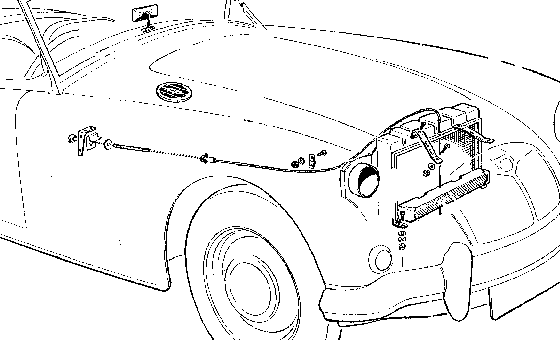
Radiator blind shown on Right Hand Drive pushrod engine MGA, pulling upward. For LHD installation the control cable would be installed on the left side.


 Thanks to Dominic Clancy, Switzerland for these pictures. Thanks to Dominic Clancy, Switzerland for these pictures.
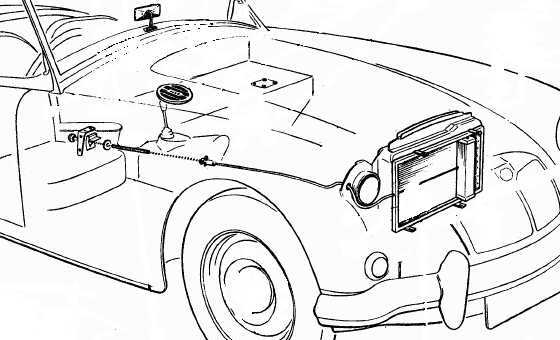
Radiator blind shown on Right Hand Drive twin cam engine MGA, pulling to the right. For LHD installation the control cable and related bracketry would be installed on the left side, and the blind would pull to the left.
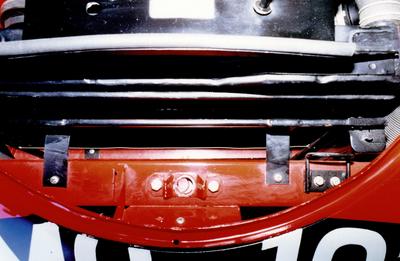
Radiator blind shown on Twin Cam MGA. Tough to get a good picture when installed. The Twin Cam radiator is positioned farther forward than in the pushrod engine cars. Thanks to John Barrett for this picture.
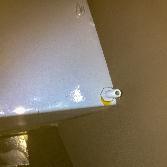
Picture at right shows the metal cable nipple installed in lower corner of the bulkhead on a RHD car. (Photo compliments of Mark Wellard in Australia).
All indication is that no radiator blind was ever supplied for Australian bound cars. A word from Norway says that the radiator blind sometimes had freezing up problems there. This problem may be aggravated by snow blowing in through the grille aperture.
In my college days in the late 1960's I used to cut a piece of corrugated cardboard to exactly cover entire face of radiator core. I would cut two slits from the top halfway down to split the top half of the sheet into three sections. These three flaps could be folded down in different combinations to expose varying area of the radiator core as the weather might change. In sub-freezing weather most of the core could remain covered. I drove through a good portion of one particularly cold winter with 5/6 of the radiator core covered.
Using the factory type radiator blind it would be convenient to cover the entire radiator for faster warm up, and uncover a small portion as required only after warm up.
On Jan 28, 2015, Roel J. in Bovensmilde, Drenthe, Netherlands wrote:
"This is the blind that was installed on my car. There wasn't a frame to guide the blind. Maybe it got lost in the early days. There is also a tube behind the dashboard to guide a wire. You can fix the wire on the left side of the dashboard. The spring inside this blind is still very strong".
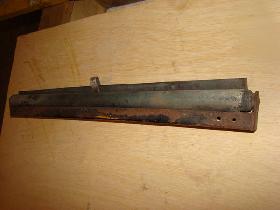
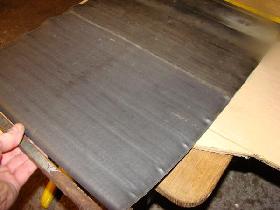
Addendum, February 17, 2019:
More photos, this time from: Mark Wellard in Australia. Top mounting backets fixed to the bonnet shut panel. Blind sitting in recess at bottom of mounting frame. The top of the frame showing fixing for the top bracket. A small screw is used for fixing but the end of the bracket has a return that wraps around the edge of the frame.
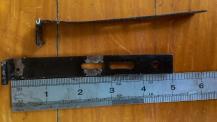


Photos above show the fixed roller and a guide frame that may be intended to prevent the blind from rubbing on the radiator core when being moved up or down. This is about the time it dawned on me why the optional oil cooler is intended to be installed about 1-1/2 inches forward from the radiator, to allow space to install the optional radiator blind immediately in front of the radiator.
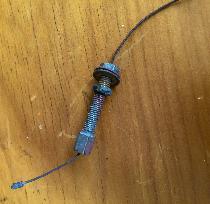
Photo at right is the bulkhead fitting (also shown on right half way up the page). So we have a Bowden cable (wire inside of jacket similar to throttle cable) running from the blind to the bulkhead. Immediately aft of the bulkhead the cable transitions to a bead chain.
Photos below show the bead chain and the control fitting that is to be mounted on the edge of the dash panel (possibly missing a right angle bracket). It is a one-handed control, operated by pulling the key-ring attached to the chain. To release the blind, the Bakelite knob is pulled and the chain retracts (maybe with a sudden slap). A rather quaint 1950's style analog/mechanical solution to a simple problem.
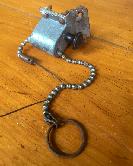

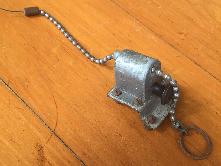
The more I see of these things the more I think there were multiple designs, possibly from different manufacturers, and maybe some of them are aftermarket supply rather than factory issue. Second illustration from top of page showing the Twin Cam model appears to show a sliding roller (but that might be an illustration error).
|














